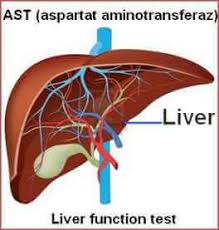An AST blood test is usually ordered by a healthcare provider as part of a liver function test panel to help diagnose or monitor liver disease or damage. Your healthcare provider may order an AST test if you are experiencing symptoms of liver disease, such as:
An AST test may also be ordered if you have a history of heavy alcohol use, or if you are taking medications that can cause liver damage, such as statins, acetaminophen, or anti-seizure medications.
In addition to diagnosing liver disease, an AST test may also be used to monitor the progression of liver disease or to evaluate the effectiveness of treatment for liver disease.
It's important to discuss the results of your AST test with your healthcare provider, as abnormal results may indicate liver disease or other conditions that require further testing or treatment.



 Contact Us
Contact Us






 Hospitals
Hospitals
 Doctors
Doctors
 Diagnostic
Diagnostic
 Pharmacy
Pharmacy
 Health Tips
Health Tips
 Blog
Blog

























Comments